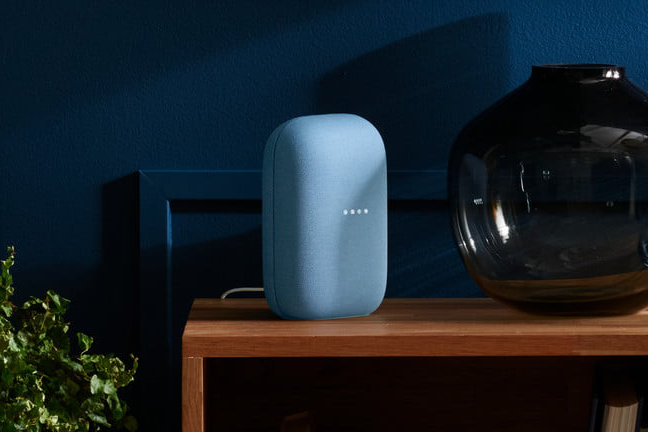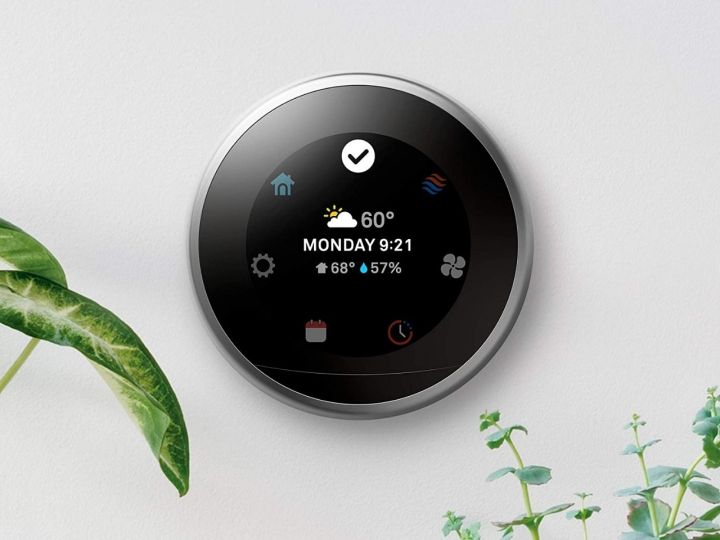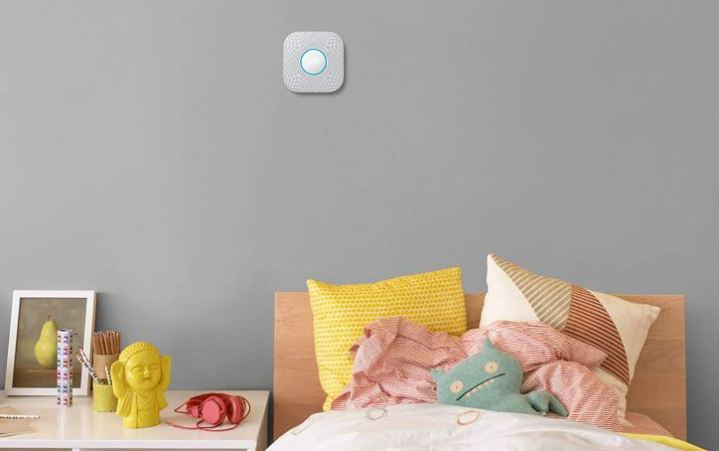Google’s Nest line of products (an evolution from the previous Google Home brand after Google purchased Nest) incorporates a variety of smart devices, all designed to work under the Home app and integrate easily with each other. If you’re a fan of Google or frequently use Google Assistant, this is a great smart home ecosystem to invest in, and thanks to tech like Matter, Nest is due to become even more compatible with other platforms in the future.
So, where should you begin in the Nest world? With our guide to all the Nest products, of course! Here are all available Nest models, what they do, and what you should know about them.
Speakers

The Nest smart speakers are flagship devices for the Google Nest brand, allowing for immediate contact with Google Assistant and the ability to send voice commands to a variety of other smart home devices.
Nest Audio 1st gen: This model is a larger smart speaker to fill the room with sound, similar to the first Apple HomePod or the Echo Show 4th-gen. It uses a 75mm woofer and 19mm tweeter to deliver highly capable sound and has minimalistic built-in touch controls beneath the fabric covering.
Nest Mini 2nd gen: The Audio is made for larger spaces, while the Nest Mini is designed to be a more personal speaker assistant. It makes for a great desk-side companion, and can easily be mounted somewhere on the wall to hear nearby voice commands clearly. It can also pair with another Mini, which is useful for improving sound if you like listening to music.
Older Google Nest devices
The Nest Audio is the first of its kind, but the discontinued Google Home series were the smart speakers that clearly helped inspired it. The Nest Mini 1st-gen, also discontinued, was very similar to the 2nd-gen model but lacked certain speaker improvements and compatibility with wall mounting.
Cams

Nest Cam Outdoor/Indoor, Battery: This versatile cam can be mounted absolutely anywhere inside or outside as long as it has a Wi-Fi connection. It offers a two-megapixel lens and video up to 1080p with night vision, plus an audio connection. Motion sensors will trigger the cam and send alerts (which you can customize) to your phone. Google’s A.I. tech also allows the cam to differentiate between people, animals, and vehicles.
These are the baseline features included in most Nest Cam devices, so expect them in most other cams, too. We’ll also note that Google has a fairly generous cloud storage program that allows you to store up to a few hours of video on the cloud for free.
Nest Cam Indoor, Wired: A more affordable version of the Nest Cam that’s indoor-only and has to be connected to an outlet, but is otherwise very similar to the outdoor model.
Nest Cam with Floodlight, Wired: This version of the Nest Cam is an outdoor version that adds two bright spotlights that can also be triggered by motion.
Nest Doorbell, Battery: This Video Doorbell has Nest Cam features in a doorbell form (plus a doorbell chime button), with a new lens designed to catch everything from people to packages at your front door. The battery design means you can put it just about anywhere.
Nest Doorbell, Wired: This wired version of the Doorbell never needs to be charged, but it will need to be placed in the same spot as your old doorbell with compatible wiring.
Older Nest Cam devices
Don’t get the doorbells confused with the Nest Hello Doorbell, an older model with less impressive specs. Also be careful of the older “IQ” cam devices, which have been replaced.
Smart displays

Nest Hub 2nd gen: The Nest Hub is similar to the Nest Audio, but has a seven-inch touchscreen you can use to view videos, scan recipes, play interactive games, take video calls, show a photo slideshow, and lots more. It’s very versatile, but does need to be literally near at hand for touchscreen use.
Nest Hub Max: The Hub Max upgrades to a 10-inch touchscreen, which is much better for watching shows and videos.
Older Nest smart displays
The Nest Hub 1st-gen model has been discontinued. It had a slightly different design and lacked the speaker upgrades and gesture “Soli” sensor that were added in the 2nd-gen.
Thermostats

Nest Learning Thermostat 3rd-gen: This flagship thermostat device can be controlled via the Home app, and
Nest Thermostat: The Nest Thermostat simplifies the hardware involved, providing fewer features but greatly lowering the price, making it a strong budget pick.
Nest Temperature Sensor: This sensor device can connect with a Nest thermostat and provide localized temperature readings. This is especially useful if the thermostat is located in a hallway or entryway where temperature readings just aren’t accurate compared to where people spend their time.
Older Nest thermostat devices
The first-generation Nest Learning Thermostat was bulkier than the others and had a much smaller screen. Google significantly increased the screen size and slimmed down the model for the second generation. For the 3rd gen, it again enlarged the screen and made the thermostat thinner, as well as upgraded its motion sensors. Google no longer sells the 1st or 2nd-gen thermostats.
Also be wary of the Nest “E” thermostat, an early version of the budget Nest Thermostat model.
Smoke detectors

Nest Protect 2nd-gen: This alarm uses a split-spectrum sensor to detect both smoke and carbon monoxide. It can send alerts to your phone, too, alerting you about low batteries or alarms. You can also silence alarms right from the app.
Older Nest smoke detectors
Google greatly improved the sensors, smoke chamber, and self-testing capabilities for the Protect 2nd generation. It no longer directly sells the 1st-gen model, but be careful if you are buying from a third party.
Smart locks

Nest x Yale Lock: Nest has teamed up with Yale for this smart deadbolt lock, which…well, it looks a lot like a touch panel Yale Lock, but works with
Wi-Fi

Nest Wi-Fi: This unit is a mesh Wi-Fi network designed to use two or more router devices to help spread out a Wi-Fi network and remove any dead zones. Google’s setup process for the Nest Wi-Fi system is very easy, and the router devices include useful touch controls. Dual-band and WPA3 encryption are both supported on this mesh network, but unfortunately, there’s no Wi-Fi 6 support.


